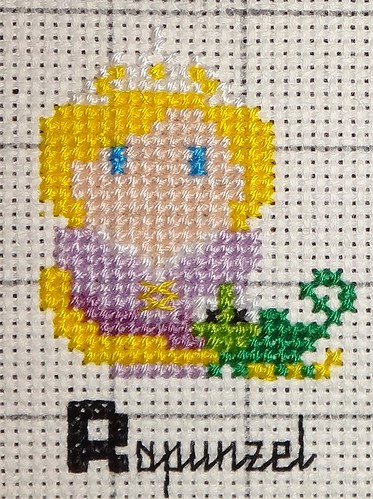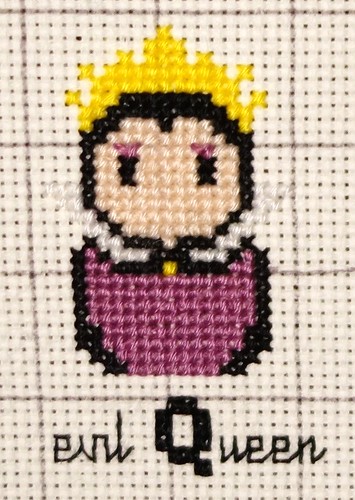Today's A to Z post is below, but I felt the need to interject another post because I finally received my pre-ordered copy of:
I have been anticipating this book for a long time and not just because of my Duranie status, it's just really nice to see New Wave music finally getting the recognition it deserves. New Wave music was and is MY music, even though I still absolutely adore Take That and Darren Hayes (much later discoveries). New Wave is what lies in the very depths of my heart and I always manage to find my way back to it eventually.
Picture, if you will, a very tiny town in the heart of Northeast Arkansas filled with pure d'ole rednecks. Now, add in an overweight, brace-face, glasses wearing girl who was obsessed with all things New Wave and British. Yeah...I was a complete and utter outcast (and that's not even including the mental issues). I was the only person in my school (or entire town for that matter) who knew who Duran Duran was in 1981, let alone worshipped them like gods! I listened to The Cure before Robert Smith teased his hair to oblivion and smeared red lipstick all over his mouth. I bounced around to the Vince Clarke-led Depeche Mode long before I fell under the spell of the morose Martin C. Gore Depeche era. Roland Orzabal and Morrissey wrote lyrics that mirrored the pain I imagined myself drowning in, while every single New Order song was my theme song. The ballads of Spandau Ballet and The Thompson Twins gave me hope that love was real and I would one day find my prince charming (who I imagined looked and dressed exactly like Adam Ant). I stood alone in a sea of ballad-rock stooged school fellows and I was perfectly fine with that as long as I had Simon Le Bon on my side (and I was thoroughly convinced I did).
Duran became huge in the mid 80's and people finally knew what I had been going on about for years (but they still weren't "hip" in my school). It eventually became cool to like The Cure and Depeche during my college years (even though they were almost completely different bands from their early 80's incarnations). Duran's second wave came about in the mid 90's and a whole new generation of Duranies was born, most of whom didn't know they had been around for so long. They have never stopped working, although it takes them several years to put out a new album. Some of my other bands are still around today making new music or keeping alive the old (and some aren't, luckily, not a lot of them are dead), but I'm still by their side as much now as I was then, just without the heartbreaking obsession clouding the way. I can accept the fact that Simon is married (and has been for 30 years). As a kid I probably would have tried to kill myself, no joke (especially if he would have married Claire Stansfield). Most of my guys are all in their 50's and 60's now (which is still hard for me to fathom) and, despite the wrinkles, balding, and bloating, they all still look pretty damn good to me! But I've waxed reminiscent long enough, on to the book.
I was trying to kill time in the last few minutes of work yesterday, so I thought I'd at least read the foreword (written by Nick Rhodes). An hour later, I was forcing myself to put it down long enough to at least drive home, where I promptly finished the entire book. Yep, it was that good! Each chapter deals with a specific song by a specific band with interviews and commentary from the artists themselves as well as updates of where they are now. Because each chapter focuses on the commentary of the band in question, they bring to life the song in ways I never knew (or had forgotten) and I often found myself re-reading sections just because it was so damned profound (yes, Ian McCulloch, you are still my Buddha). A band's most popular song wasn't always their best song, and, as any true New Wave fan will tell you, a-Ha and OMD were NOT one-hit wonders (and, their one hit was often not their best). This book reiterates that point for those that don't know otherwise and might possibly turn you on to your new favorite song! It also shows that, even though Bernard Sumner and Peter Hook obviously still hate each other and Morrissey still apparently hates everybody, there is a lot of love between other bands and artists that you wouldn't think would be there (as well as some surprising disses).
Granted, there were some notable exclusions (where were The Cure, Split Enz, Squeeze, XTC, Roxy Music, etc?), and I disagreed with some of the author's choices for songs, but even the utter useless Flock of Seagulls had something interesting to say (and trust me, my first impression was to skip right over their chapter). I disagreed that Girls On Film was Duran's defining song (not that Hungry Like The Wolf would have been any more defining), but the song (and video) had a major influence on the authors and I get it (even if I don't agree with it). But I did notice the dedication to the husband of one of the authors (as any diehard Duranie would, because only a diehard Duranie would own Big Thing).
The book ends with a chapter about Band-Aid and "Do They Know It's Christmas" as well highlights from Live Aid and its influence on other charity songs to come. Everyone who participated in it were favorite band members of mine (well, except for Bono and U2). I can remember when the video came out and I had to explain to other classmates who Bob Geldof and Midge Ure were (believe it or not, Bob Geldof used to be in a band...it's surprising how many people don't know that). For a brief moment in time, my new wave knowledge was useful when classmates wanted to know who so-and-so was, and who was the "cute" one. I was cool for five minutes, then dropped back into my quiet life of obscurity (where I preferred to be anyway). That song is still played every year at Christmas time, and I still roll down the windows, crank up the volume, and sing at the top of my lungs like I was a 14 year old girl.
The book is a definite celebration of the music that, not only defined a generation, but continues to influence the music of today. You can't turn on a modern radio station without hearing samplings of, or just out-and-out copies of, 80's songs. And, as much as that really pisses me off, it just goes to show that New Wave music managed to cement its place in history a heck of a lot more than the playlists of my school mates (although we wouldn't have known what a playlist was back then). A big thank you to the authors (Lori Majewski and Jonathan Bernstein) for giving me yet another reason to keep listening to my music and even seeing some of it in a new light. Long live New Wave! Here's hoping there is a book 2 (and hopefully a more defining Duran song than Girls On Film).
















































